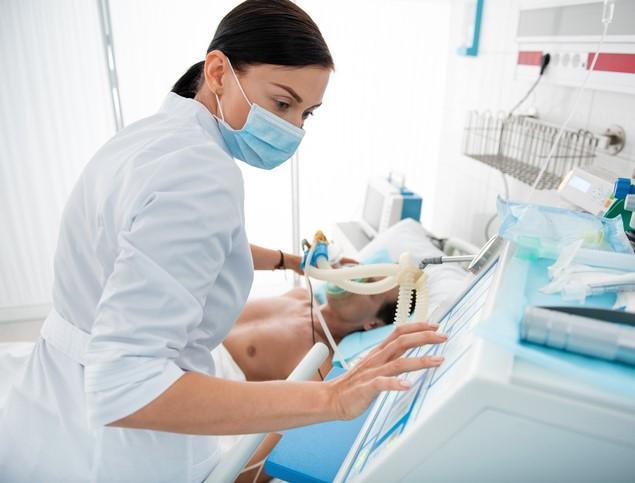Yesterday the Centers for Disease Control and Prevention updated, for the second time in a week, guidance for healthcare workers on using face masks, including N95 respirators and surgical masks, while treating possible COVID-19 patients in conventional, contingency, and crisis settings.
To the surprise of many, the guidance recommended that nurses, doctors, and staff fashion homemade masks out of scarves and bandanas if there is a shortage of face masks in clinics and hospitals.
CDC tells health workers to improvise
"In settings where facemasks are not available, HCP might use homemade masks (e.g., bandana, scarf) for care of patients with COVID-19 as a last resort. However, homemade masks are not considered PPE [personal protective equipment], since their capability to protect [healthcare professionals] is unknown," the CDC said. "Caution should be exercised when considering this option. Homemade masks should ideally be used in combination with a face shield that covers the entire front (that extends to the chin or below) and sides of the face."
The guidance comes as healthcare experts and infection control specialists brace for an influx of COVID-19 patients in US hospitals, while trying to conserve and make best use of a dwindling supply of both surgical masks and N95 respirators. Though Vice President Mike Pence said yesterday industrial N95s were now available for hospitals to purchase, viral posts on Facebook and Instagram from doctors and nurses warn supplies will run out in a matter of days.
Last week, the CDC recommended N95s be replaced by surgical masks if the supply chain demands it, "Based on local and regional situational analysis of PPE supplies, facemasks are an acceptable alternative when the supply chain of respirators cannot meet the demand," the CDC said.
Experts say conserving is key
Many experts and hospital officials now say N95 respirators, the most protective available face covering for healthcare workers, should now only be used in an aerosolizing event, such as intubation of a COVID-19 patient. For routine patient care they recommend eyewear, gloves, gowns, surgical masks, and face shields—if available.
Amesh Adalja, MD, of the Johns Hopkins University Center for Health Security, said he mostly agrees with the CDC's efforts to conserve N95s.
"We should not being using N95 for routine care; we don't have evidence those are necessary outside of aerosolizing events," said Adalja. "We should protect against droplet infections while using surgical masks to take care of patients."
Adalja said aerosolizing events are the most risky to perform on a COVID-19 patient, but routine examinations of an unknown respiratory illness in a patient should only require surgical masks.
But Michael Osterholm, PhD, MPH, director of the University of Minnesota's Center for Infectious Disease Research and Policy (CIDRAP), which publishes CIDRAP News, says it should be the other way around—until we have evidence that N95s are unnecessary, healthcare workers should use them. He cited a recent commentary published on the CIDRAP site noting that airborne transmission does very likely occur with COVID-19 and that N95s, as recommended by previous CDC guidance, should be the standard.
"In my discussions with healthcare workers on the frontlines of patient care, it's clear that they understand there is a real shortage of N95 respirators," Osterholm said. "In that regard, they, despite their very real and appropriate anxiety, will provide the best patient care they can even when it may place them at increased risk of an occupationally acquired COVID-19 infection.
"What they resent is being told by their employer that the CDC update last week to the COVID-19 respiratory protection recommendation is a science-based change, when it's all about respirator availability."
Being aware of regional supply chains
Susan Kline, MD, MPH, the medical director of infection control at the University of Minnesota Medical Center, said her hospital currently uses N95s for aerosolizing procedures of the most seriously or critically ill patients.
"You have to look at volume of patients as PUIS [persons under investigation for COVID-19], and symptoms are quite broad and overlap with other disease," Kline said. "The move is to conserve N95s for high-risk procedures."
Kline said hospitals have be mindful of their own supply chain, and the regional supply chain of PPE as they consider these recommendations.
"We are not recommending N95s for every frontline contact," Kline said. "And we are not recommending N95 if a patient comes in with a likely infection." Instead, Kline is recommending the use of a surgical mask paired with a clear plastic facial shield.
Kline's recommendation is in line with many states' and hospitals' guidelines published in the last week. UW Medicine, in Seattle, also said N95s should be used only for critically ill patients or in the event of an aerosolizing procedure.
Craig Coopersmith, MD, of Emory University, is the former president for the Society of Critical Care Medicine. He told CIDRAP News he anticipates there will be continued confusion as hospitals try to balance science-based recommendations with a supply chain that could quickly be drained by the novel coronavirus.
"The CDC is being sensitive to the supply chain; they are not saying use all of [the] N95s and then move on to masks," said Coopersmith. "They are trying to conserve."





















